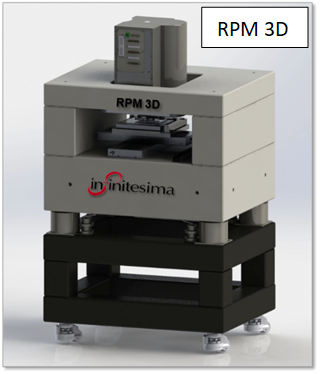Infinitesima Ltd announced the shipment of the first RPM 3D system to jointly develop 3-dimensional metrology applications for characterisation of semiconductor devices in collaboration with imec.

The RPM 3D is an enhanced version of the Rapid Probe Microscope (RPM) already applied in Mask repair applications. The RPM applies a probe microscopy technique with unique technology advantages that enable high speed data acquisition rates. Photothermal actuation of the probe combined with an interferometric detection system enables fast and accurate surface detection.
The RPM 3D has been enhanced to enable automated tomography applications including new characterisation modes such as conductivity. These techniques will be applied in the imec collaboration to address increasingly more complex 3D metrology problems of advanced semiconductor processes such as Gate-All-Around, GAA, transistors.
The RPM 3D capability to automatically switch between different probes whilst retaining sample registration enables much faster cycles of learning in the development of 3D device structures, hence helping accelerate the introduction of these new processes and, in the future, provide production process control.
In addition to traditional 3D surface measurement of the sample, the system will enable characterisation of electrical properties through the depth of structures using C-AFM and other techniques.
Initial results from the collaboration will be published in a paper by imec and Infinitesima at the SPIE Advanced Lithography conference 22nd – 26th February.
Peter Jenkins, Infinitesima CEO stated ‘We are very excited to be partnering with imec, a recognised global leader in advanced Semiconductor process research. Their pioneering work in tomographical semiconductor analytics will prove increasingly important with the increasing focus on 3D integration to continue Moore’s law. The RPM’s unique technology enables us to address the industry drive of migrating lab techniques into the fab to support future Semiconductor manufacturing process control’